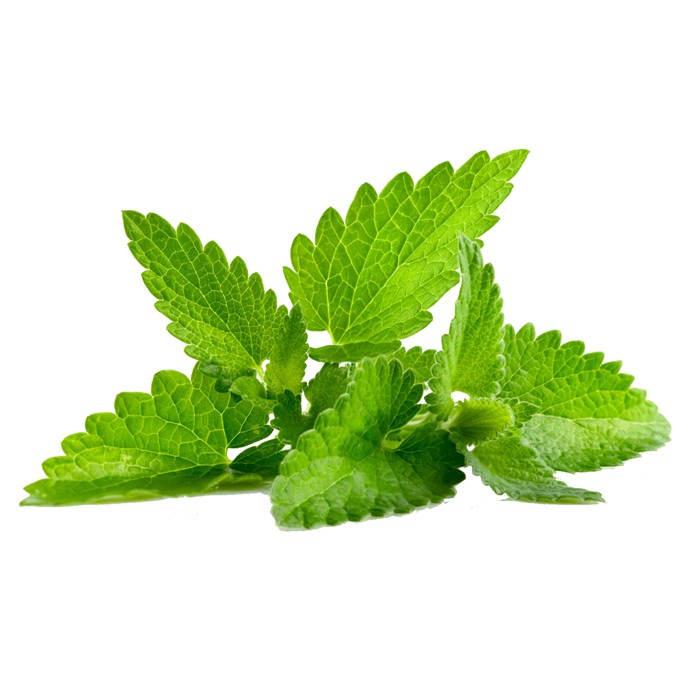Lemon Balm
Melissase folium – Leaf of lemon balm
Melissa officinalis L. – Lamiaceae

Lemon balm is a perennial, herbaceous plant. The rhizome is short, the stem is upright, covered with mechanical hairs and glandular scales. The leaves are opposite, ovate to rhombic in shape, with net veins, covered with hairs and glands. The flowers are collected in dichiums, and the fruits are elongated, egg-shaped. Lemon balm grows around the village, along the edge of the forest. It is spread sporadically, it is grown in gardens.
The medicinal part of the plant is the whole, dried lemon balm leaf, collected just before flowering. The leaf is thin, brittle when dry, dark green in color, with a sweet, then spicy taste and a very specific lemon scent.
The lemon balm leaf contains 0.05-0.3% essential oil. Essential oil of lemon balm is obtained by steam distillation from fresh shoots of lemon balm. Monoterpene aldehydes and alcohols are dominant in the essential oil, and the most important ingredients are citral aldehydes (geranial and neral). Lemon balm leaves contain sesquiterpenes (β-caryophyllene and β-caryophyllene oxide), heteroside flavonoids (quercitrin, rhamnocitrin, apigenin and luteolin derivatives), then phenolic acids, catechin tannins and triterpene compounds. Also, lemon balm leaf is a rich source of depsidic and rosmarinic acid.

Lemon balm exhibits antimycotic (very important in the fight against viruses and bacteria), spasmolytic (relaxes smooth muscles), sedative (soothing) action, and also exhibits antithyroid activity. Phytopreparations based on lemon balm are used for mild insomnia, due to their sedative effect. This herb can improve mood and reduce the intensity of an immediate anxiety attack. Also, lemon balm is used as a means to improve cognitive functions (memory), so it is recommended as an adjunctive therapy in the treatment of Alzheimer’s disease. The use of such preparations is also recommended for indigestion, i.e. for impaired function of the organs of the digestive tract, due to their antispasmodic effect. In addition to spasmolytic action, lemon balm leaf shows anti-inflammatory and antioxidant effects. Due to the pronounced antiviral potential, preparations based on lemon balm leaves are used as additional therapy in the treatment of viral infections caused by the Herpes simplex virus. The antiviral action of lemon balm comes from the presence of rosmarinic acid, and this plant also exhibits bacteriostatic action (prevents the growth of bacteria).
References
- Medicinal benefits of lemon balm (Melissa officinalis) for human health
- Melissa officinalis extract in the treatment of patients with mild to moderate Alzheimer’s disease: a double blind, randomised, placebo controlled trial
- Comparison of Neuroprotective Effects of Melissa officinalis Total Extract and Its Acidic and Non-Acidic Fractions against A β-Induced Toxicity
- Melissa officinalis extract inhibits attachment of herpes simplex virus in vitro
- The effects of Melissa officinalis supplementation on depression, anxiety, stress, and sleep disorder in patients with chronic stable angina
